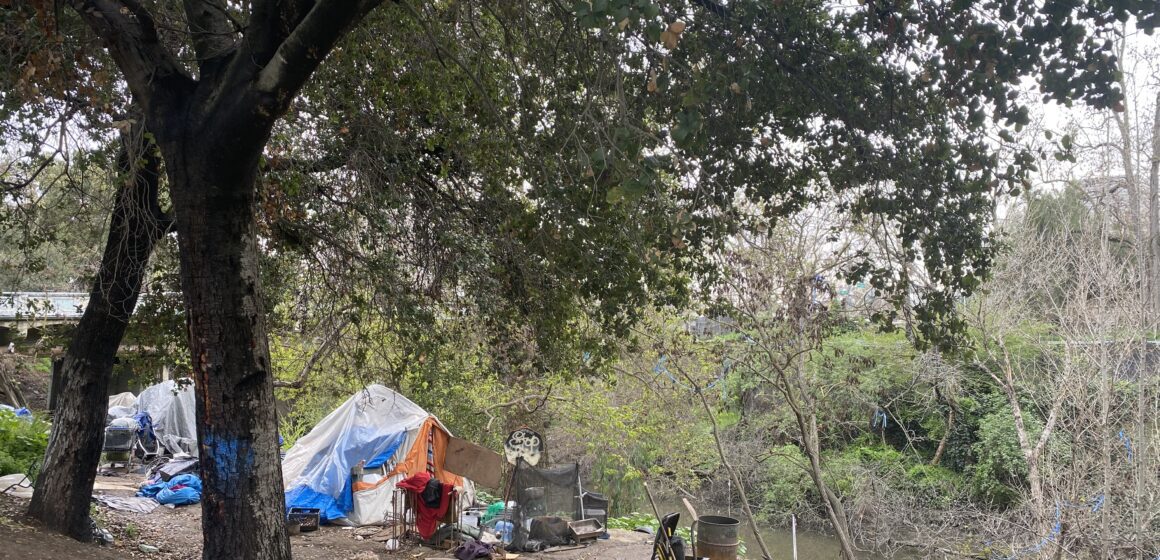It’s easy to miss the potential impact of federal budget cuts when you live above the fray.
If you’ve got a job, a home and a cushion in your checking account, Washington’s latest budget proposal might sound like just another headline. But if you’re one of the thousands of extremely low-income or homeless residents in Santa Clara County, these cuts aren’t abstract — they’re a direct threat to your survival.
We’re talking about cuts to rental assistance, housing repair and development funds, and supportive services. Collectively, this is the foundation of the safety net that helps keep our most vulnerable neighbors afloat. Pull the thread, and the whole thing unravels.
Let’s be real: Santa Clara County is already in crisis. We have more than 10,000 people without a home. Rents have climbed beyond reach for low-income earners. Waiting lists for subsidized housing are years long. And just as we start to make some progress — just as new affordable housing comes online, just as people begin to stabilize — Congress wants to take a hatchet to the very programs making that progress possible.
These aren’t just numbers on a spreadsheet. They are people. Take Anaya, a 67-year-old retired housekeeper in East San Jose. Her Section 8 vouchers means she is able to afford her rent, and still barely make do with her meager Social Security income each month. Or James, a disabled veteran in Mountain View, currently housed thanks to a federally funded supportive housing program. Without that voucher, without that program, where do they go? Back to shelters? Back to the streets?
Federal funding of housing and safety net programs are often the last line of defense for people like Anaya and James. Public housing dollars pay to keep units livable — fixing broken heaters, leaky roofs and unsafe stairwells. These funds help build affordable housing for people making less than 30% of the area median income. Rental assistance is often the only thing standing between a family and an eviction notice.
And the cuts won’t just mean fewer homes — they will mean more displacement, more trauma, more emergency room visits and more deaths. We’ve seen this movie before. The Reagan-era housing cuts in the 1980s directly coincided with the modern rise in homelessness across American cities. If this budget passes, we’ll be watching the sequel — except this time the stakes are even higher because the system is already stretched to the breaking point.
In Santa Clara County, we’ve worked hard to build a coordinated response to homelessness. Through partnerships with local governments and community organizations, we’ve housed and sheltered thousands in recent years. But we didn’t do it alone. Federal dollars played a big part in making it possible. They funded housing vouchers, paid for supportive services and helped us leverage local dollars to build more affordable homes. Without that federal partnership, our local progress will slow to a crawl — if not collapse entirely.
Make no mistake: The people most affected by these cuts are the same people already shut out of our region’s prosperity. Single parents, people with disabilities, LGBTQ+ youth and seniors on fixed incomes are all disproportionately represented in the homeless population. Budget cuts don’t hit everyone equally — they hit those at the bottom the hardest.
So what now?
Local leaders need to sound the alarm — and back it up with action. That means filling federal funding gaps with local dollars wherever possible. It means doubling down on eviction prevention and emergency rental assistance. It means building political will to protect those on the margins.
But it also means we, as a community, need to rethink what we value. Because if our federal government is willing to balance the budget on the backs of people with no home, no income and no voice, then we have to ask: who are we?
We live in a region fueled by innovation and abundance. But true innovation isn’t just about AI models or IPOs. It’s about solving problems that matter — like making sure everyone has a place to sleep at night.
This is not just a policy fight. It’s a moral one. And we must decide which side of the line we want to stand on.
Because for those already living on the edge, this budget isn’t just politics — it’s life or death.
San José Spotlight columnist Ray Bramson is the chief operating officer at Destination: Home, a nonprofit that works to end homelessness in Silicon Valley. His columns appear every second Monday of the month. Contact Ray at [email protected] or follow @rbramson on X.



Leave a Reply
You must be logged in to post a comment.